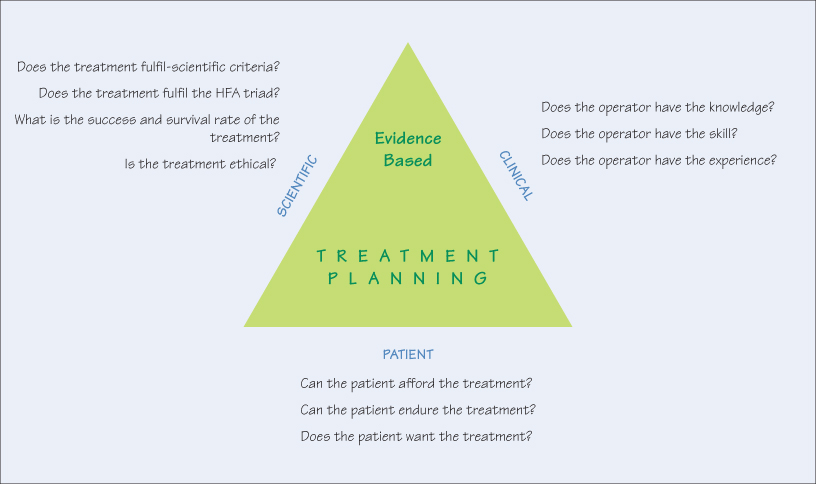12
Treatment Planning: Evidence-Based Treatment

After arriving at a diagnosis from the information gathered by an examination and requisite tests, the next stage is preparing treatment option(s) for therapy. Ideally, the proposed treatment should sequentially restore health, function and aesthetic (the HFA triad). The HFA triad is a sequence, where health is the primary goal, followed by function and aesthetics. Therefore, if conditions are not optimal, achieving health is the priority, at the sacrifice of function and aesthetics. However, in reality, achieving this Utopian goal is challenging and often a compromise may be the best possible outcome. It is essential to recognise and communicate compromises to the patient at the onset of treatment, rather than when complications arise.
Evidence-based (EB) treatment planning is not only a sound scientific model, but also a systematic approach to decision-making. EB treatment consists of three elements:
- Scientific credence;
- Clinical erudition;
- Patients’ needs and wants.
Scientific Credence
Before considering a specific treatment option, it is important to arrive at a definitive diagnosis. If the diagnosis is incorrect, the therapeutic options will also be incorrect. In some circumstances, there may be more than one treatment option, and each choice should be assessed to ensure there is sufficient research and clinical trials evidence to support its long-term efficacy.
Besides scientific validity, the patient should be informed of the likely survival or success rate of each treatment option. Survival and success rates are not synonymous. Survival implies that a restoration of prostheses has endured, but may be functionally and aesthetically inadequate. For example, a crown with defective margins causing periodontal inflammation together with tooth mobility is neither aesthetic nor/>
Stay updated, free dental videos. Join our Telegram channel

VIDEdental - Online dental courses


